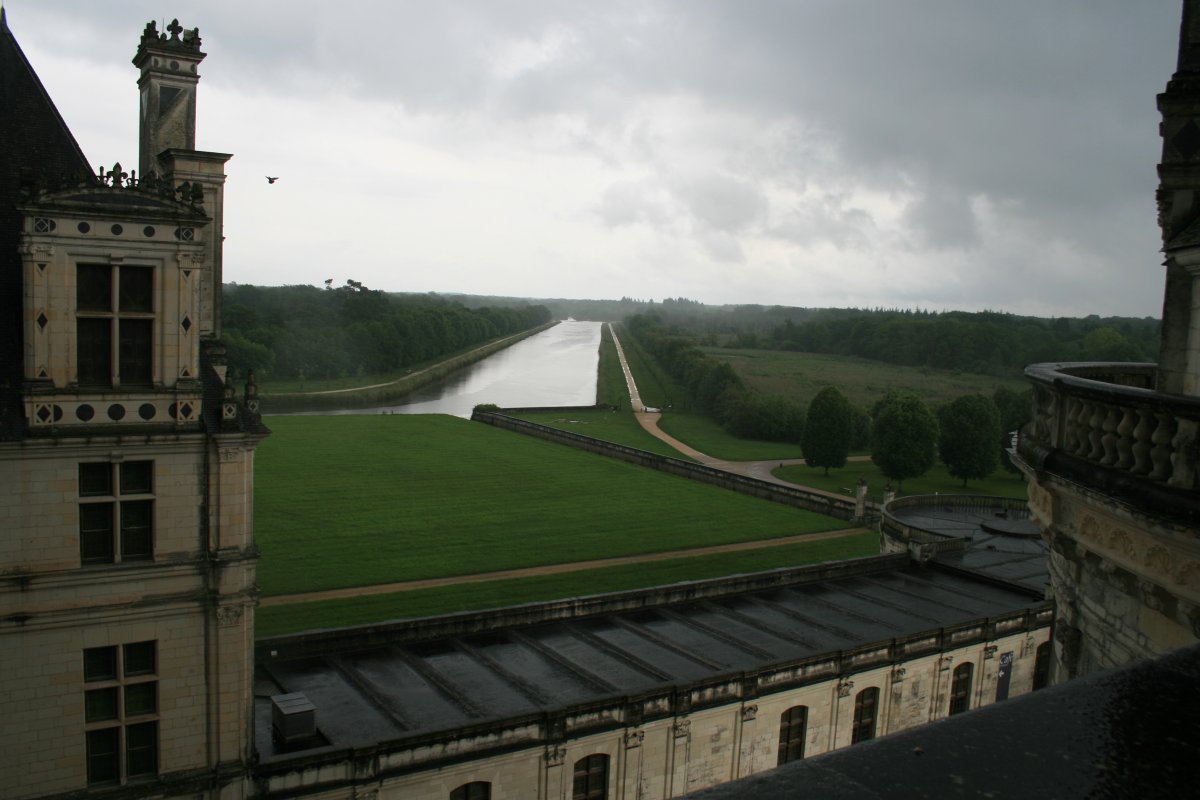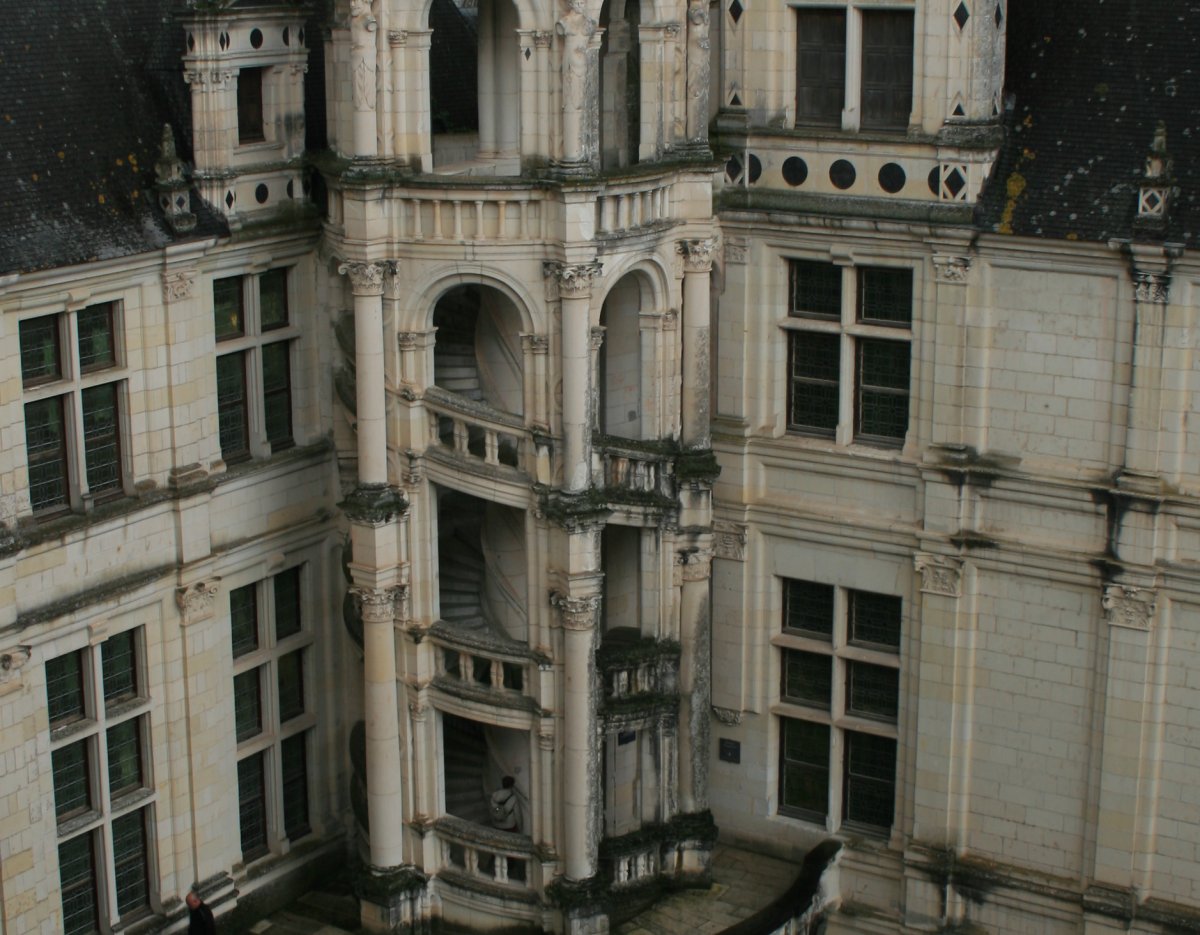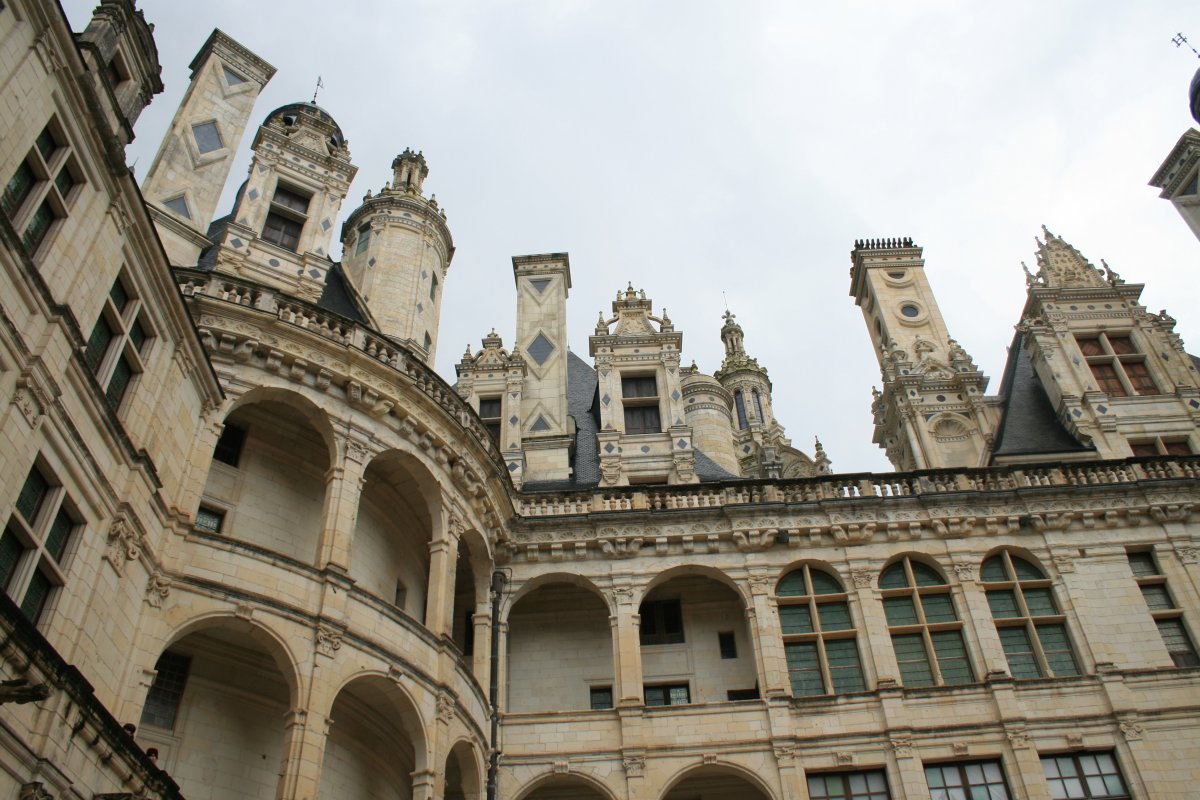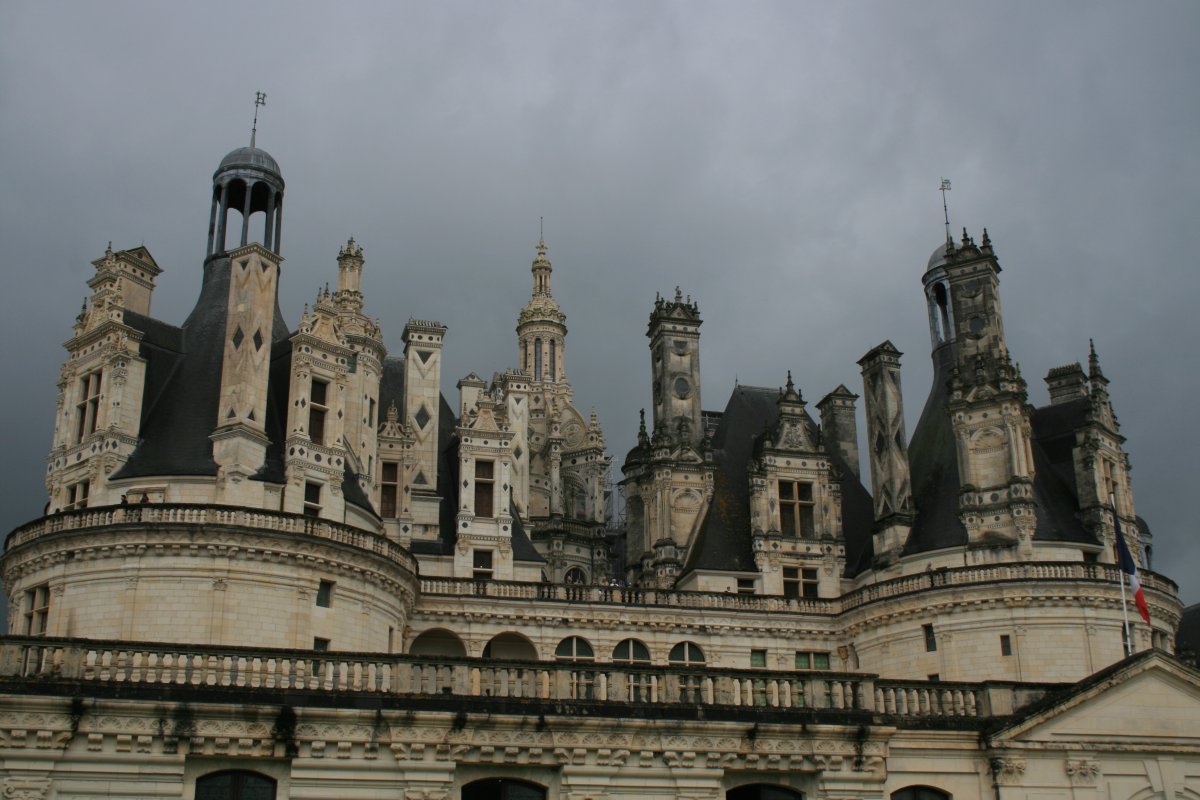France June 2016 - Chambord
After Chenonceau, we headed over to Chambord. The contrast between the two was striking. Chenonceau was not really that big, but it was beautiful, and cozy. It was clearly "lived in".
Chambord, on the other hand, was huge, empty and cold. However, Francis I had it built to impress the most important people of the day -- like Charles V -- the Holy Roman Emperor -- and it did. It took 1,800 workmen 15 years to build it, starting in 1519. It was rarely used.
"Chambord is Francis I's Renaissance castle. It is the monumental manifestation of his dreams of empire and beauty realized in stone. The first sight of it is an overwhelming experience, which evokes an understanding that, with Francis I, the monarchy had reached a new level of power. You are surprised to learn not that the Chateau has 440 rooms but that it doesn't have more." - Ina Caro.
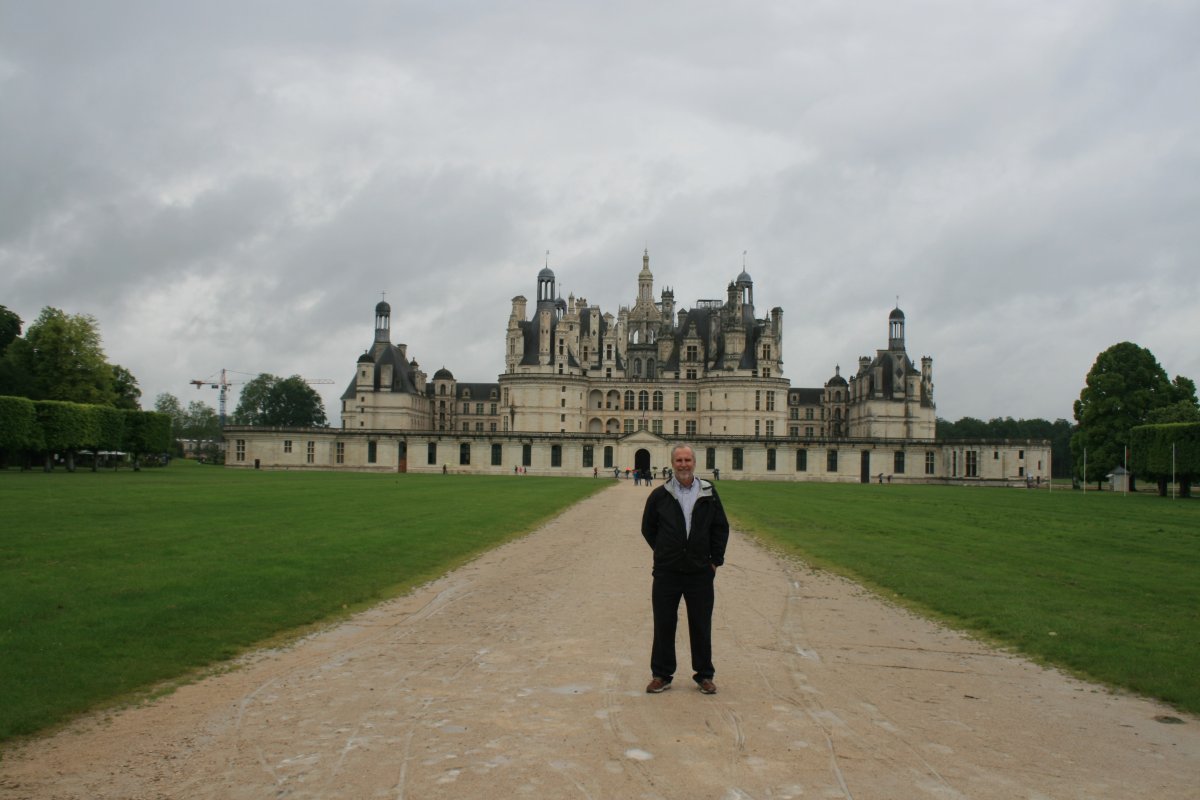
From Wikipedia: The Château de Chambord is one of the most recognisable châteaux in the world because of its very distinctive French Renaissance architecture which blends traditional French medieval forms with classical Renaissance structures. Chambord is the largest château in the Loire Valley; it was built to serve as a hunting lodge for Francis I, who maintained his royal residences at the Château de Blois and Amboise.
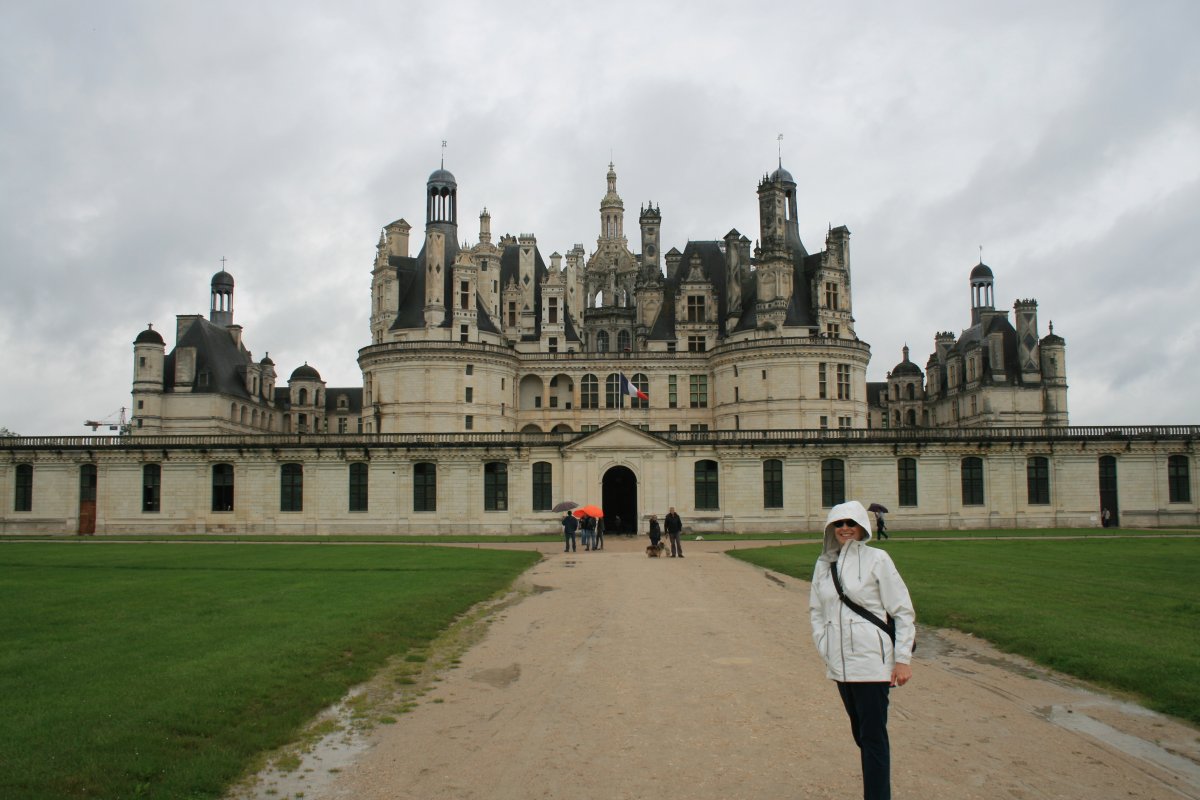
An aerial view.
By User:Elementerre, edited by Atoma and Sir Gawain - This file was derived from: Chateau Chambord edit.jpg, CC BY-SA 3.0, https://commons.wikimedia.org/w/index.php?curid=7430105
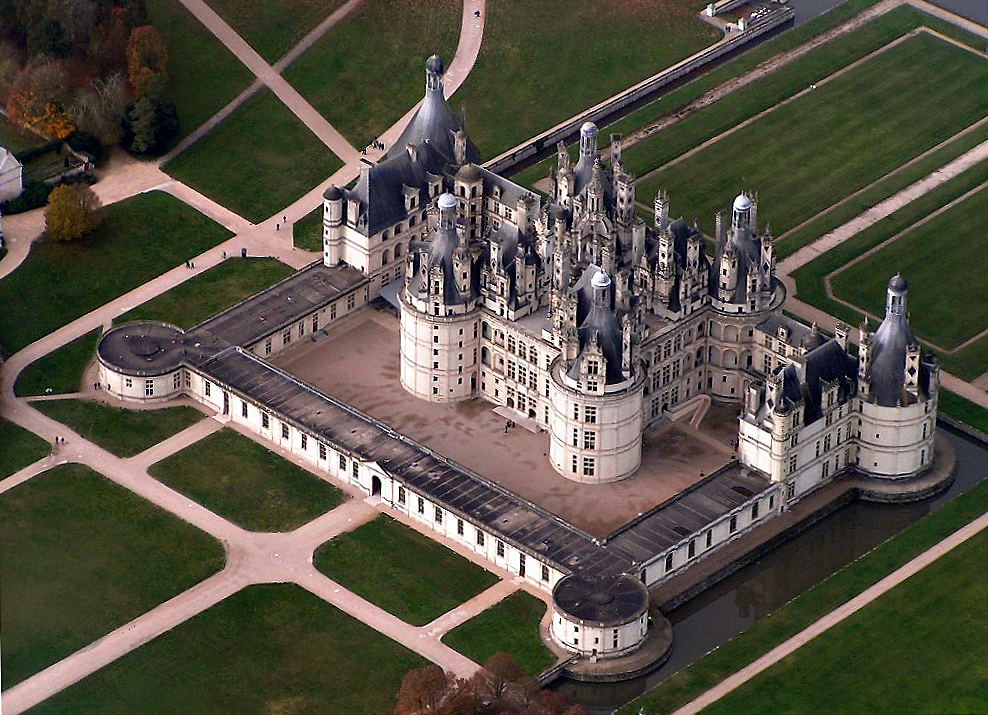
"The château was built to act as a hunting lodge for King Francis I; however, the king spent barely seven weeks there in total, that time consisting of short hunting visits. As the château had been constructed with the purpose of short stays, it was not practical to live in on a longer-term basis. The massive rooms, open windows and high ceilings meant heating was impractical. Similarly, as the château was not surrounded by a village or estate, there was no immediate source of food other than game. This meant that all food had to be brought with the group, typically numbering up to 2,000 people at a time.
As a result of all the above, the château was completely unfurnished during this period. All furniture, wall coverings, eating implements and so forth were brought specifically for each hunting trip, a major logistical exercise. It is for this reason that much furniture from the era was built to be disassembled to facilitate transportation. After Francis died of a heart attack in 1547, the château was not used for almost a century.
For more than 80 years after the death of King Francis I, French kings abandoned the château, allowing it to fall into decay. Finally, in 1639 King Louis XIII gave it to his brother, Gaston d'Orléans, who saved the château from ruin by carrying out much restoration work.
King Louis XIV had the great keep restored and furnished the royal apartments. The king then added a 1,200-horse stable, enabling him to use the château as a hunting lodge and a place to entertain a few weeks each year. Nonetheless, Louis XIV abandoned the château in 1685."
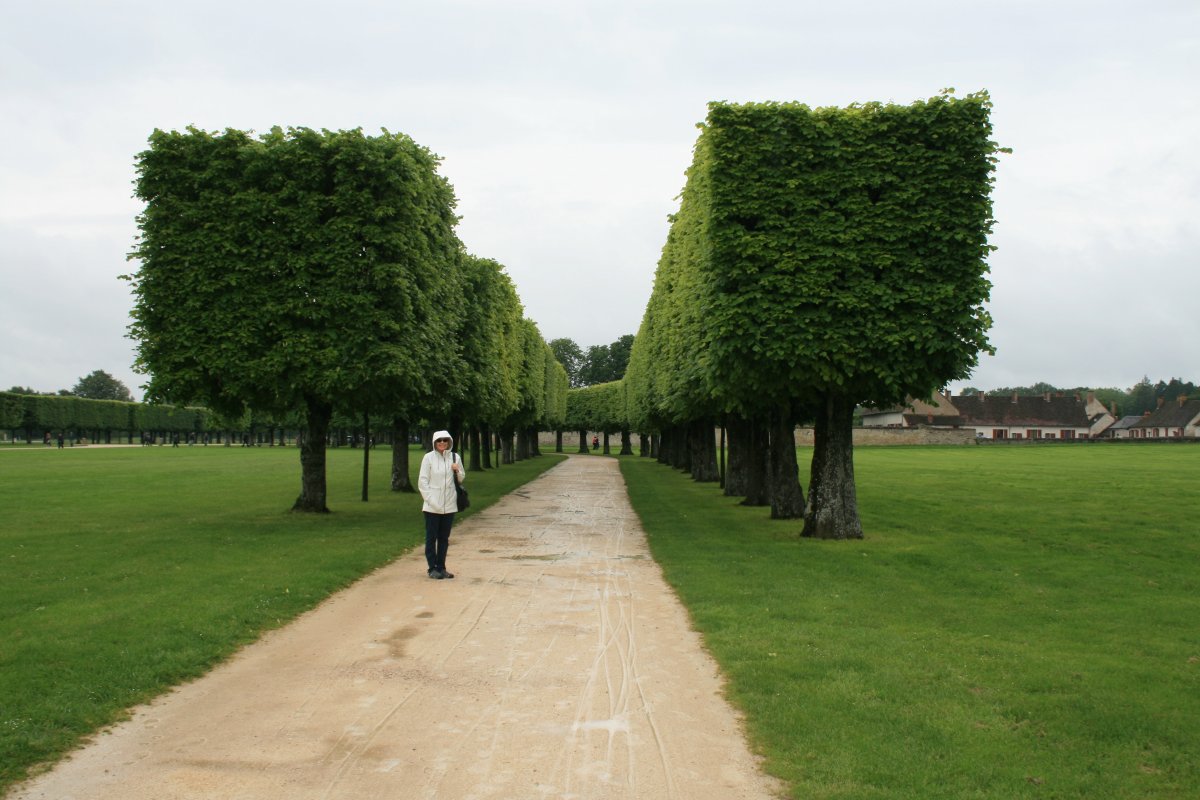

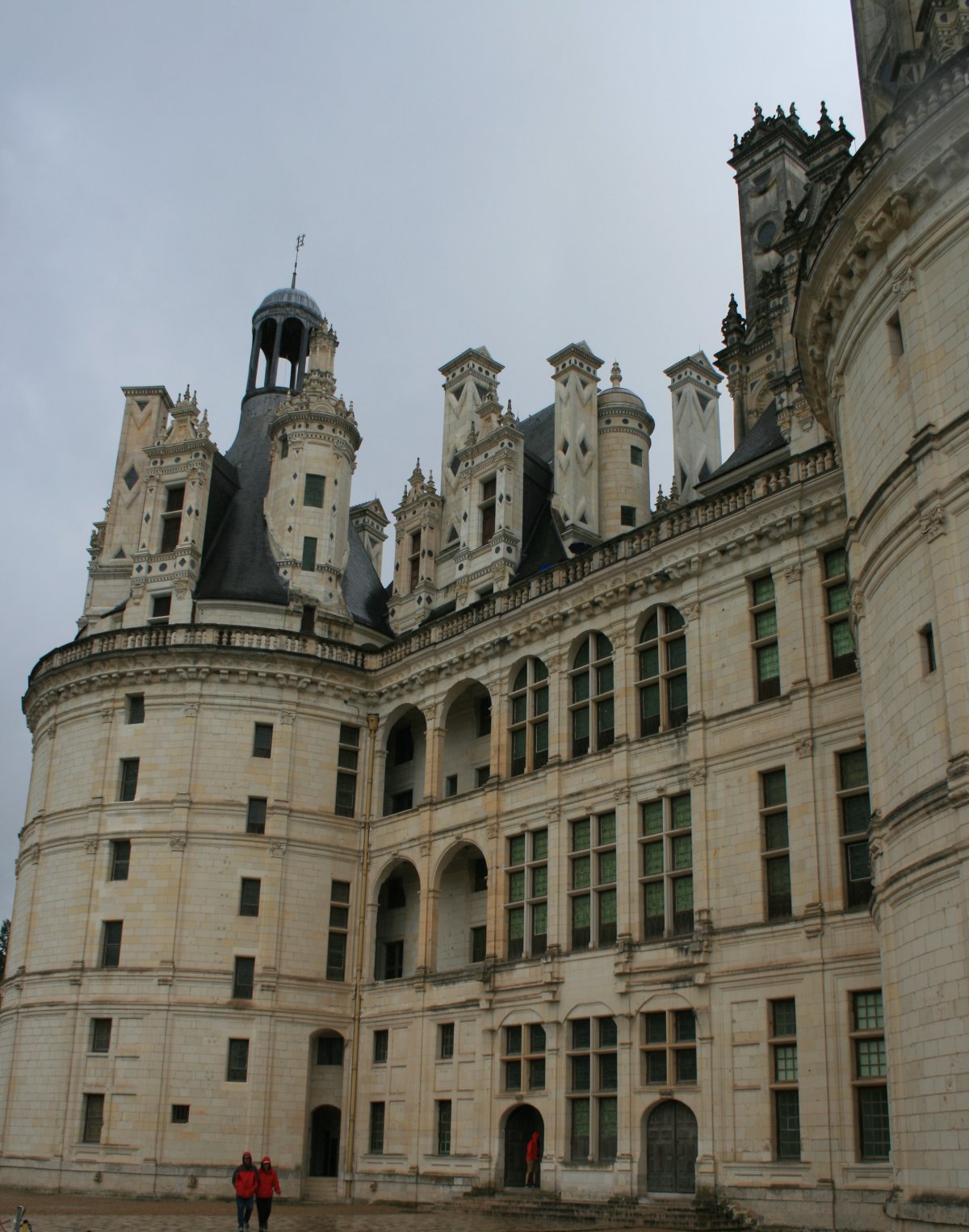
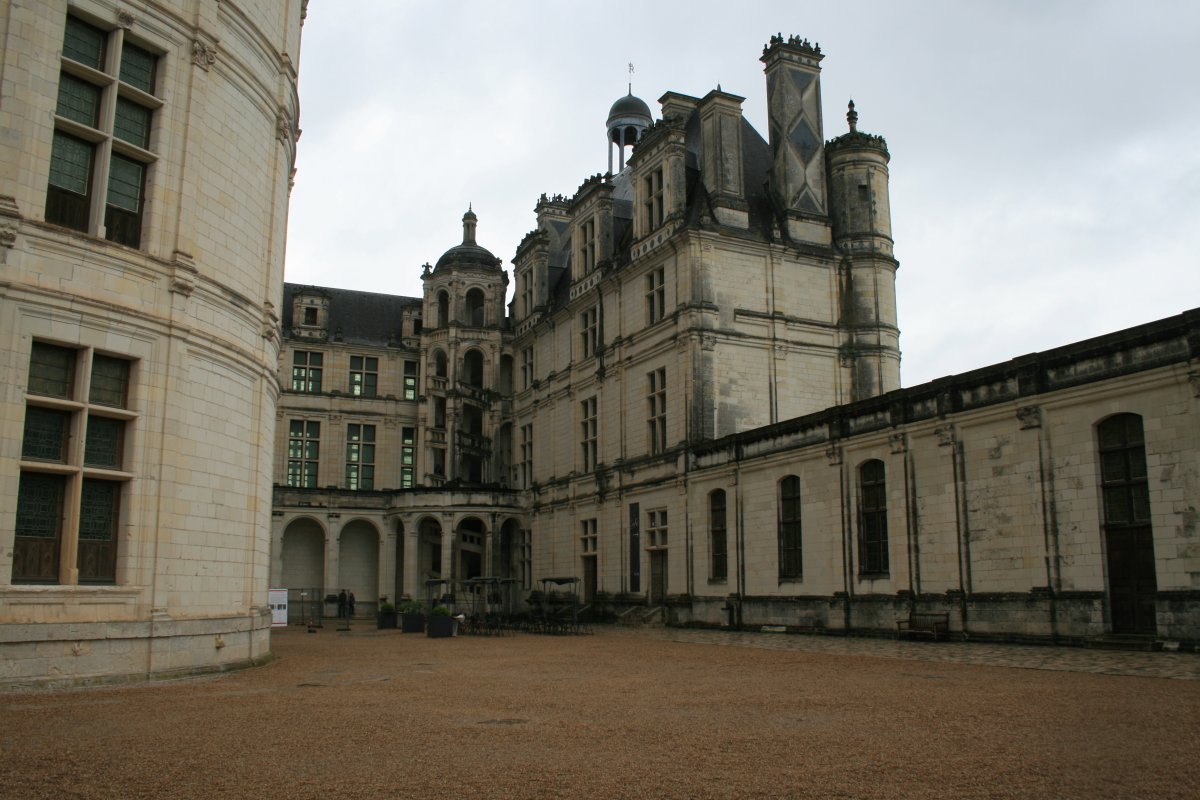
The chateau was just massive inside. All the walls were stone, with wood ceilings. It must have been impossible to heat with just fireplaces, although there are 365 of them.
At the center of the chateau -- to the left in this picture -- was an interesting double-helix staircase. Its two spirals are interwoven, so people can go up and down and never meet.
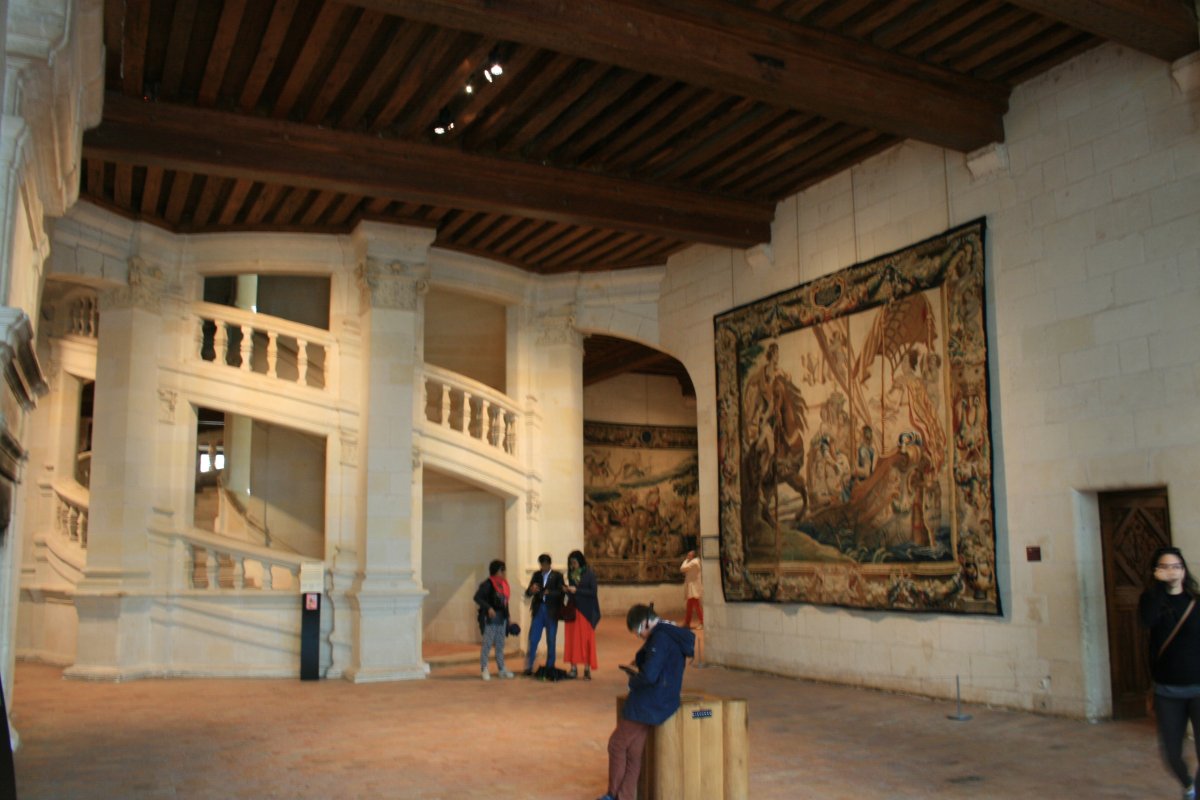

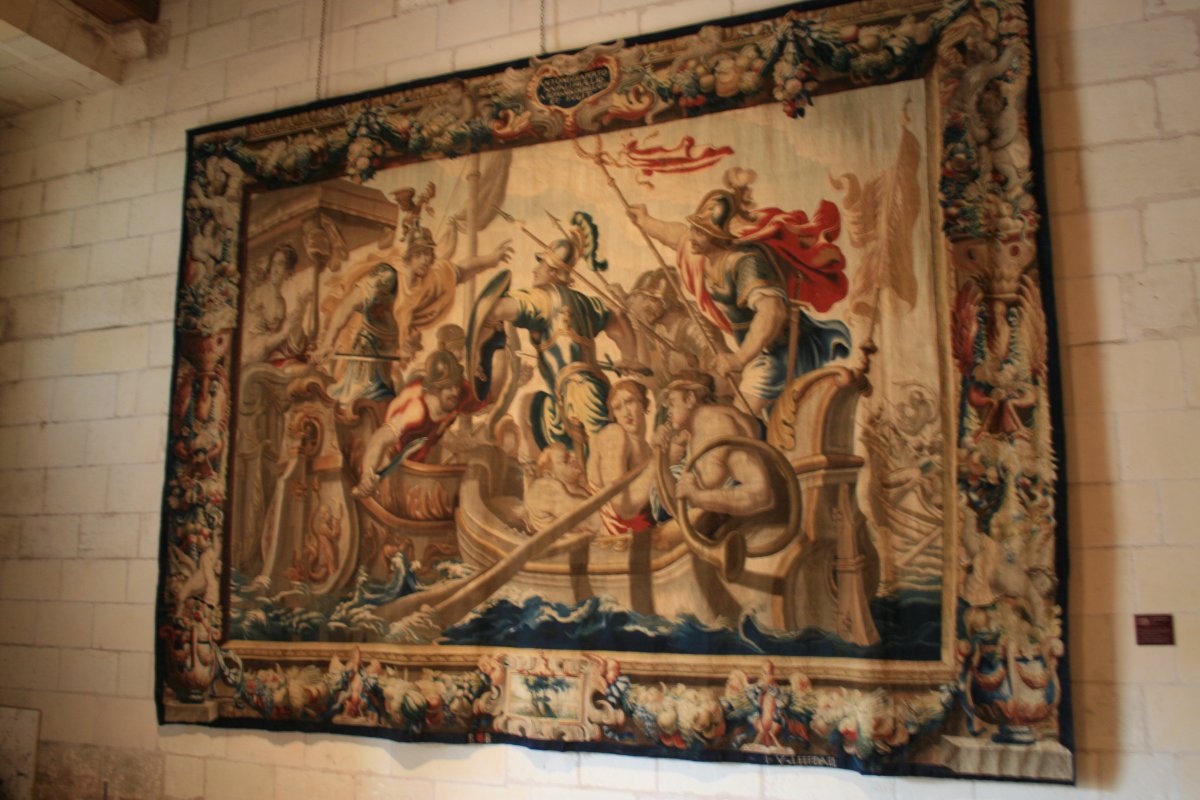
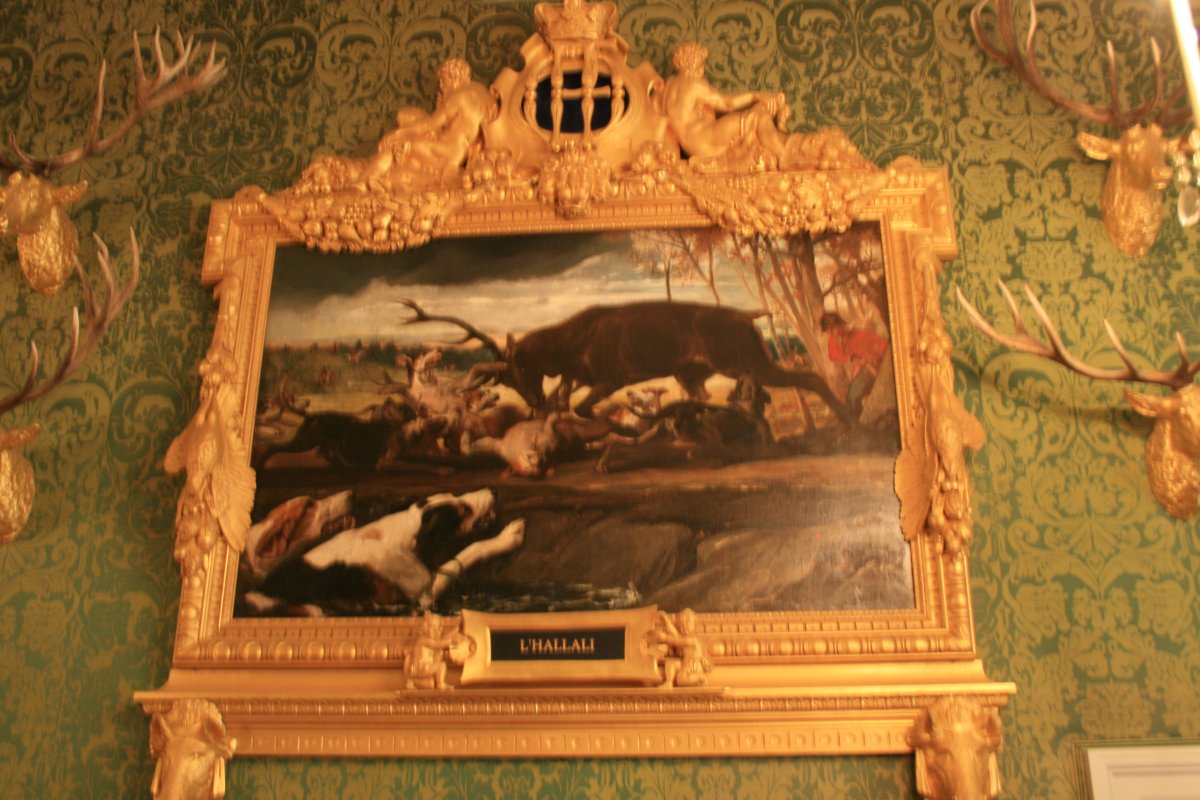

The ornate workmanship was incredible.
But when you think about what resources must have been required to build something like this in the sixteenth century, it is depressing. The wealth of France was spent on this impractical building for one man and then it was rarely used. How many other more useful things could the money have been spent on?
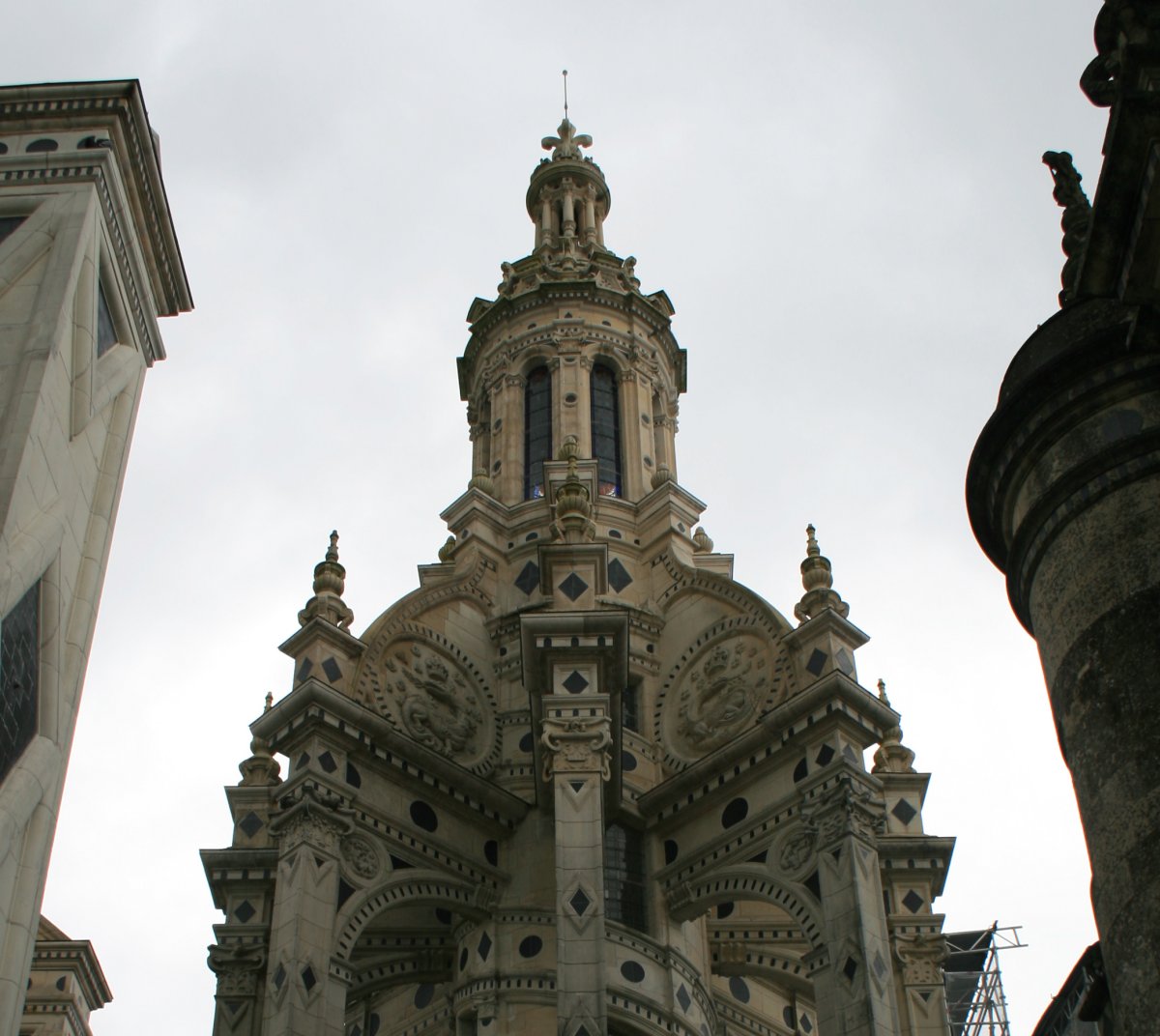
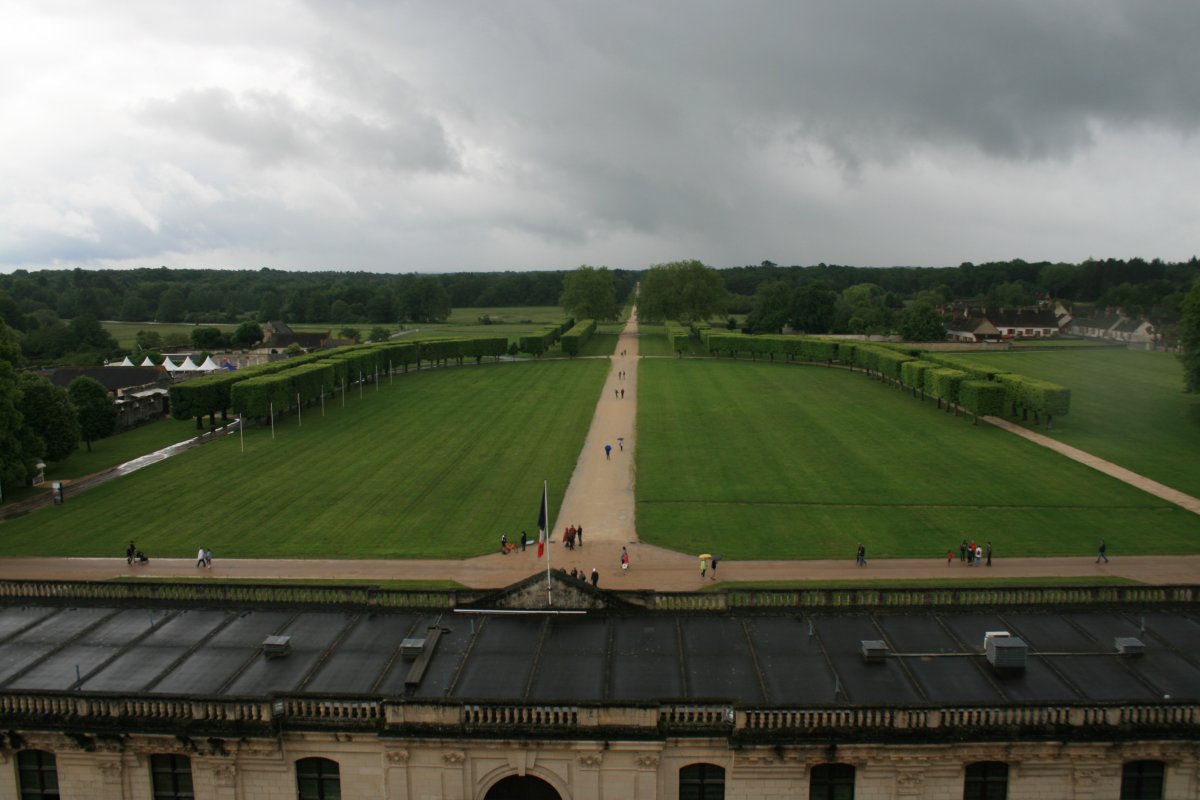
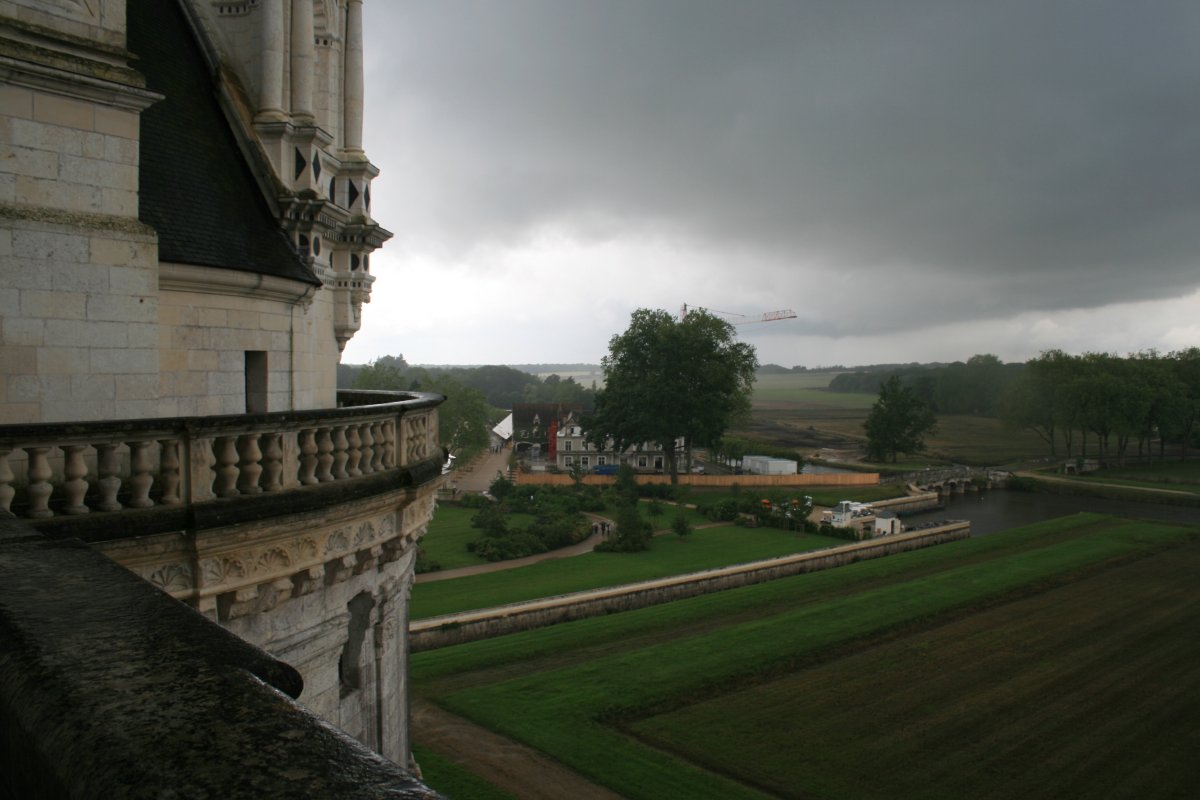
Lookig out the back. Yes, the rain did come while we were inside.
Chambord is surrounded by Europe's largest enclosed forest park, a game preserve teeming with wild deer and board. -- Rick Steves

